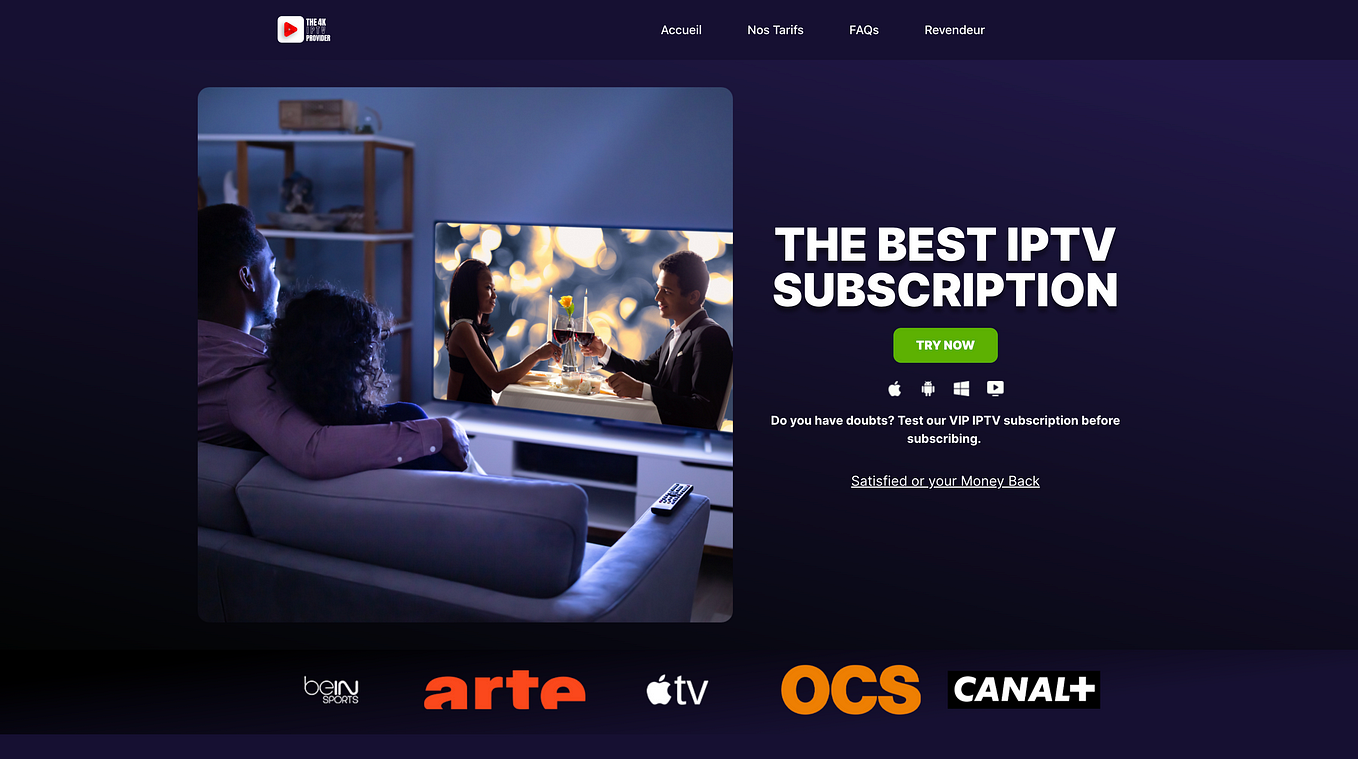How IPTV Functions: A Step-by-Step Guide to Net Procedure Tv Innovation
Internet Procedure Tv (IPTV) has changed the method we consume tv content, supplying a new realm of opportunities through the power of the web. Recognizing the ins and outs of just how IPTV works can drop light on the modern technology that drives this ingenious type of media distribution. From the fundamental principles of IPTV to the intricate procedure of content shipment, each action plays an important duty in ensuring a seamless watching experience. In this overview, we will certainly uncover the underlying systems that make IPTV a remarkable blend of technology and enjoyment.
IPTV Fundamentals
In comprehending IPTV fundamentals, it is essential to comprehend the essential workings of this technology in delivering tv web content over the net. IPTV, which represents Net Method Tv, uses Web Protocol (IP) networks to transmit tv web content to customers' gadgets. Unlike standard techniques of broadcasting television web content with cord or satellite signals, IPTV streams media with high-speed internet links.
Additionally, IPTV permits interactive capacities, such as video clip as needed (VOD) and electronic program overviews (EPG), improving the user experience by giving even more control and flexibility in accessing content. Generally, comprehending the basics of IPTV establishes the foundation for discovering its advanced capabilities and the benefits it supplies to contemporary television intake.
Material Distribution Process
Reliable content shipment in IPTV systems entails a well-structured procedure that guarantees smooth transmission of tv content over IP networks. The material distribution procedure in IPTV begins with the development of the video clip content, which is then encoded right into electronic layout suitable for IP transmission.

Middleware Performance
With the assimilation of middleware, IPTV systems gain boosted capability that streamlines customer interaction and web content administration. One of the essential features of middleware in IPTV is to enable tailored individual experiences by giving functions such as interactive program overviews, video-on-demand services, interactive marketing, and customer preferences administration.

Gadget Compatibility
Provided the critical role of middleware in allowing seamless interaction and content management in IPTV systems, a vital element to think about is the compatibility of gadgets utilized for accessing the IPTV services. Device compatibility is important for guaranteeing a smooth user experience and optimal efficiency when accessing IPTV web content.
In the context of IPTV, device compatibility refers to the capacity of a tool to successfully engage with the IPTV service, display material properly, and support the necessary methods and codecs for visit our website streaming video clip material over the internet. Various gadgets, such as wise TVs, set-top boxes, smart devices, tablet computers, and computers, might have differing levels of compatibility with IPTV solutions.
To make sure a seamless watching experience, it is crucial for users to pick gadgets that are compatible with the details IPTV solution they are using. In addition, IPTV provider need to use support for a variety of tools to accommodate the diverse demands of their individual base. By focusing on gadget compatibility, both customers and provider can improve the total IPTV experience.
High Quality of Solution (QoS)
Thinking about the critical duty of maintaining a high requirement of performance and dependability in IPTV systems, guaranteeing regular Top quality of Service (QoS) continues to be a fundamental facet of the user experience. QoS in IPTV describes the ability of the system to provide web content with minimal disturbances, high resolution, and fast packing times. To attain ideal QoS, various sites aspects need to be resolved. Network transmission capacity is essential to support top quality video clip streaming without buffering or pixelation. Additionally, latency, jitter, and packet loss need to be minimized to improve the watching experience.
Provider employ QoS devices such as website traffic prioritization, buffering, and mistake modification to preserve a stable IPTV service. By focusing on IPTV website traffic over much less time-sensitive data, service providers can ensure smooth playback also throughout height usage hours. Buffering helps make up for network variations, while mistake adjustment techniques enhance information stability.
Continuous surveillance and explanation optimization of QoS criteria are important to adapt to transforming network problems and user needs. Eventually, a robust QoS structure is crucial for delivering a smooth and pleasurable IPTV experience to customers.
Verdict
In conclusion, IPTV runs via the transmission of television material over net procedure networks. Top quality of Service plays an important role in maintaining the efficiency and integrity of IPTV solutions - IPTV subscription.